Teaching
I took up weaving in 1958, so I’ve got years of study and research under my belt. My weaving life has been fully taken up by designing, weaving and teaching. I gave two-year professional courses and free courses in my studio, and courses for schools of design, craft co-operatives and other institutions all over Italy. As well as doing plenty of private research, I trained as a weaver attending courses at US universities, art schools, professional studios and studios of textile design, as well as weaving and dyeing summer courses in the UK. I took several study trips to the US, Mexico, Guatemala, Colombia, Peru, Bolivia and Syria, as well as to several European countries, where I was able to have a close look at, photograph and try out many local weaving techniques and collect ethnic artefacts and looms which I then studied and taught. See Personal history
My studio is at the same time a research centre, a workshop and weaving school, and a library of almost 2.000 books on textiles and related subjects. As well as hands-on teaching, students are given detailed course notes and have access to samples and ethnical and historical artefacts from my collections. An important part of my courses is teaching a reliable working method for the creative craftsman, i.e. understanding the relationship between sample and project, how to go from drawdowns, samples studied and woven during the course and patching together photos of the samples to designing interesting cloth and good textile artefacts.
I think hand-weaving should aim at creating art objects, designing small series of elegant interior design and fashion accessories, and designing for industry. My courses, from beginner to advanced level, are on demand and aimed at highly-motivated people. In each course students work on individual looms which they learn to dress, and are asked to weave several samples of the techniques and weaves under study. They are also given a hefty handout and a bibliography (all the books can be consulted in the studio). Courses are organized around the study of a given technique and its variations and applications, which I believe is key to creativity and personal design. Group work is essential to the learning process, especially in advanced courses, because it is challenging to see how the other students are applying the same technique or developing the same pattern. To the same end students are encouraged to take photos both of samples available in the studio and samples woven by their fellow students.
Paola Devizzi and Giulia Pils, long-time collaborators of Paola Besana, are currently offering weaving classes. Info concerning these classes can be found at the bottom of the page.
Down here, you can read how Paola Besana described her approach to weaving didactics and how she structured her classes.
Past courses and workshops, held by Paola Besana
Courses
Courses are held on dates to be agreed upon. Courses 01 and 02 are given to a minimum of three and a maximum of four students; all the other courses to a maximum of six students. Courses last on average 30 hours, and are held either over one week or on three consecutive weekends. Four-shaft weaving for beginners is a prerequisite for all courses from 03 onwards.

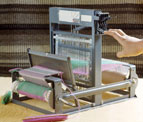
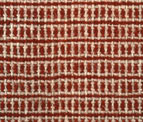

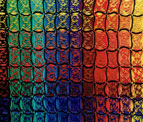

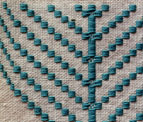
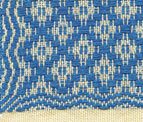
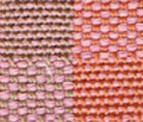
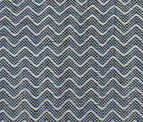
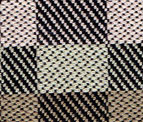





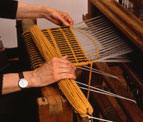

01 Rigid-heddle weaving for beginners
02 Four-shaft weaving for beginners
03 Color-and-weave for the rigid-heddle loom and for four- and eight-shaft looms (advanced courses)
04 Blocks of color-and-weave effect in warp rep for the rigid-heddle loom and for four- and eight-shaft looms (advanced courses)
05 Weaving theory for four and eight shafts (advanced courses)
06 Beginners’ and advanced loom-controlled lace weaves on four and eight shafts: three-end and five-end mock leno and Bronson lace
07 Traditional and modern weaves with two and four contrasted blocks of supplementary wefts (beginner and advanced)
08 Overshot with four staggered blocks (beginner and advanced)
09 Combination weaves on four shafts
10 Eight-shaft weaves
11 Damask weaves on eight shafts
12 Beginners’ double weave on four shafts
13 Advanced course of four-layer double weave (on eight shafts)
14 Advanced double weave on eight shafts, using blocks
15 Supplementary floating warps on four shafts
16 Supplementary floating warps on eight shafts
17 Beginners’ rug-weaving on a two-shaft loom or a rigid-heddle loom
18 Advanced courses of rug-weaving on four and eight shafts
Workshops
I also offer theoretical and practical workshops. They generally last two or three days for six hours each day, with a lunch break, and can be held on any day of the week on request by at least three people. Theoretical workshops on a specific subject involve examining and discussing several manufacts and samples, and doing recognition tests. Classes can be of up to ten students. Practical workshops, which are limited to a maximum of four students, concentrate on hands-on study of specific techniques.



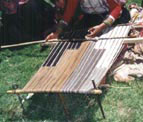
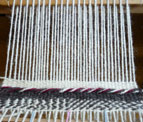
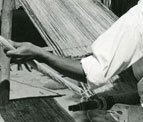
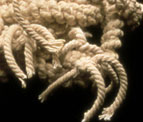
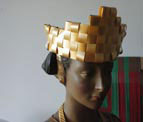
19 Cloth planning and designing (theoretical workshop)
20 Planning and designing textile objects (theoretical workshop)
21 Ethnic looms: their characteristics and use (theoretical workshop)
22 Loom for discontinuous warps (theoretical workshop)
23 Twining (practical workshop)
24 Backstrap loom with heddle stick and shed rod (practical workshop)
25 How to analyze textile structures with special reference to wrappings, cords and braids (theoretical and practical workshop)
26 Weaving with semi-rigid ribbons (practical workshop)
Learning materials
Students work on individual looms and with selected yarns. In all courses and seminars they are given course notes with detailed instructions, a bibliography and a list of suppliers and other useful addresses, and they can consult books in my weaving library. Seminars on ethnic looms include all the necessary material to make the looms. The library is also open by arrangement to students with specific interests. Visits to the studio, preferably on the days when the library is open for consultation, can be arranged by email.
Special terminology
When explaining the contents of any course you cannot help using terms that can puzzle non-weavers. Terms such as warp, weft, sett, draw-down, profile, threading, lift plan or treadling, tie-up, etc., can be daunting for the lay person, but are essential in weaving and necessary to those that have already taken a beginners course in order to decide where to go from there. If you feel lost, a visit to my studio will help you make sense of those mysterious words. You can also find them in this technical glossary.
Weaving classes offered by Giulia Pils
Giulia Pils is a designer, researcher, and professor. Having concluded her PhD in design, since 2007 she takes care of counselling, designing and teaching within the framework of textile and fashion culture area. She begins weaving with Paola Besana in 2013 and at the same time flanking her in the management of the weaving studio. Giulia offers two types of courses held both in Italian and English:
Manual weaving courses on four and eight shafts designed for those who want to approach weaving and need to learn basic techniques and for those who want to acquire specific textile skills, deepen their knowledge of particular techniques or look for support to develop a personal project.
Courses in textile culture and merchandise intended for those who want to explore ancient and contemporary textile production in its historical, productive and iconographic aspects up to those related to trends and languages of visual culture.
For further information on the complete offer and the next courses dates write to
Weaving classes offered by Paola Devizzi (in Italian)
I corsi di tessitura che propongo sono stati pensati avendo come riferimento il metodo d’insegnamento di Paola Besana, con cui ho collaborato lungo tre decenni e presso la cui Scuola mi sono formata. I corsi sono suddivisi in base al tipo di telaio su cui si lavora:
Telaio a pettine liccio: corso base, corso avanzato di tessuti traforati. Sono corsi di 14 ore su due giorni.
Telaio a quattro licci: corso base, corso base avanzato, corsi superiori, quali: effetto di colore, tessuti lanciati a due blocchi, tessuti popolari (lanciati a quattro blocchi), a garze da rimettaggio e a giro manuale, tessuto doppio, armature su rimettaggio a punta (waffel e diamantino), krokbradg, broccato d’ordito. I corsi sono di due o tre giorni.
Telaio a otto licci: armature base su telaio a otto licci, tessuti damascati.
Per informazioni
Email:
Tel: 393 9013574
Instagram: